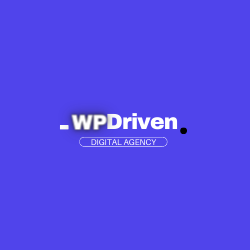The Ultimate Website Maintenance Checklist for a Smooth Online Presence
Introduction: Nurturing Your Digital Space
In the fast-paced digital world, a well-maintained website is more crucial than ever. It’s not just about aesthetics, but also about functionality, security, and user experience. As technology evolves and online trends change, maintaining your website becomes a non-negotiable task. Our website maintenance checklist is your go-to guide for ensuring your online presence remains polished, engaging, and effective.
Website Maintenance Checklist: A Must for Every Webmaster
Your website is your virtual storefront, and just like a physical store, it requires regular upkeep to attract and retain visitors. By adhering to this comprehensive website maintenance checklist, you’ll be equipped to navigate the dynamic landscape of the internet and maintain a competitive edge.
1. Keeping Things Secure
Cyber threats are ever-present, making security a top priority for your website. LSI Keywords: website security, online protection, cybersecurity
Regular Software Updates and Patches
Updating your content management system (CMS), plugins, and themes is essential to patch vulnerabilities and ensure optimal performance. Neglecting updates can expose your website to potential security breaches.
SSL Certificate Maintenance
An SSL certificate not only secures data transmission between your website and users but also boosts your search engine ranking. Ensure your SSL certificate is up to date to provide a safe browsing experience.
Backup Your Data Regularly
Data loss can be catastrophic. Regularly back up your website’s files and database, and store backups in a secure off-site location.
Monitor for Malware and Intrusions
Utilize security plugins and tools to regularly scan your website for malware and unauthorized access attempts. Immediate action can prevent potential damage.
2. Streamlined Content Management
Engaging content keeps visitors coming back. LSI Keywords: content optimization, fresh content, user engagement
Audit and Update Content
Regularly review your content for accuracy, relevance, and freshness. Outdated content can harm your credibility and user experience.
Optimize Images and Media
Large media files can slow down your website’s loading speed. Compress images and videos to ensure swift page loading without compromising quality.
Check for Broken Links
Broken links frustrate visitors and harm SEO. Regularly scan your website for broken links and fix or redirect them promptly.
Implement Proper Formatting
Readable content is key. Use subheadings, bullet points, and short paragraphs to improve readability and user experience.
3. Responsive Design and User Experience
With users accessing websites from various devices, a responsive design and smooth user experience are paramount.
Mobile-Friendly Optimization
Ensure your website is fully responsive, adapting seamlessly to different screen sizes. Google prioritizes mobile-friendly sites in search results.
Test Website Speed
Slow-loading websites drive users away. Regularly test your website’s speed and make necessary adjustments for optimal performance.
User-Friendly Navigation
Intuitive navigation helps visitors find what they need quickly. Review and optimize your website’s menu and internal linking structure.
4. SEO Enhancement
A well-optimized website ranks higher in search engines, driving organic traffic. LSI Keywords: search engine optimization, organic traffic, keyword strategy
Keyword Research and Optimization
Conduct regular keyword research to identify relevant terms. Incorporate these keywords naturally into your content to improve search engine visibility.
Meta Tags and Descriptions
Craft compelling meta titles and descriptions for each page, including relevant keywords. These snippets often determine whether users click on your link in search results.
XML Sitemap Submission
Submit an updated XML sitemap to search engines to ensure all your pages are indexed and crawled efficiently.
External Linking Strategy
Include high-quality external links to authoritative sources in your content. This enhances your credibility and provides additional value to your visitors.
5. Addressing Common Questions
What Should Website Maintenance Include?
Website maintenance should encompass several key areas, including regular software updates, security patches, content optimization, mobile-friendliness, user experience enhancement, and search engine optimization (SEO). It also involves tasks like monitoring for malware, backing up data, and ensuring proper formatting for readable content.
How Do I Check Website Maintenance?
To check website maintenance, review each aspect of your website’s upkeep. Check for software updates, security measures, fresh and optimized content, responsive design, user-friendly navigation, and effective SEO strategies. Regularly monitoring your website for malware and broken links is also crucial.
What Is the Checklist in Maintenance?
The checklist in website maintenance is a comprehensive guide that outlines the essential tasks needed to keep your website running smoothly. It includes areas like security updates, content optimization, mobile-friendliness, user experience, and SEO enhancement. Following this checklist ensures your website remains secure, engaging, and visible to your target audience.
How Do I Write a Website Maintenance Report?
Writing a website maintenance report involves documenting the tasks you’ve performed to upkeep your website. Include details about software updates, security measures implemented, content optimization efforts, mobile-friendliness improvements, user experience enhancements, and any SEO strategies employed. Highlight challenges faced and solutions implemented to demonstrate your commitment to maintaining a polished online presence.
Conclusion: Your Roadmap to Website Excellence
Maintaining a website requires dedication and consistent effort, but the rewards are substantial. By following this comprehensive website maintenance checklist, you’re investing in the long-term success of your online presence. Keep your website secure, content engaging, user experience seamless, and SEO strategies on point. Remember, a well-maintained website reflects your commitment to delivering value to your audience.







